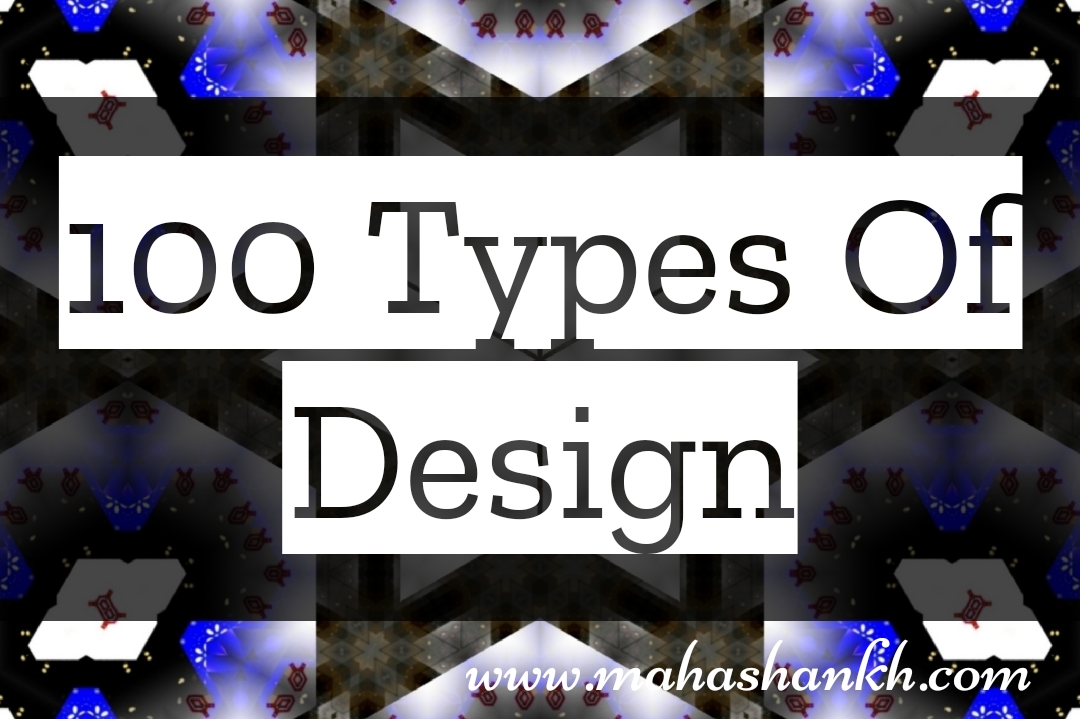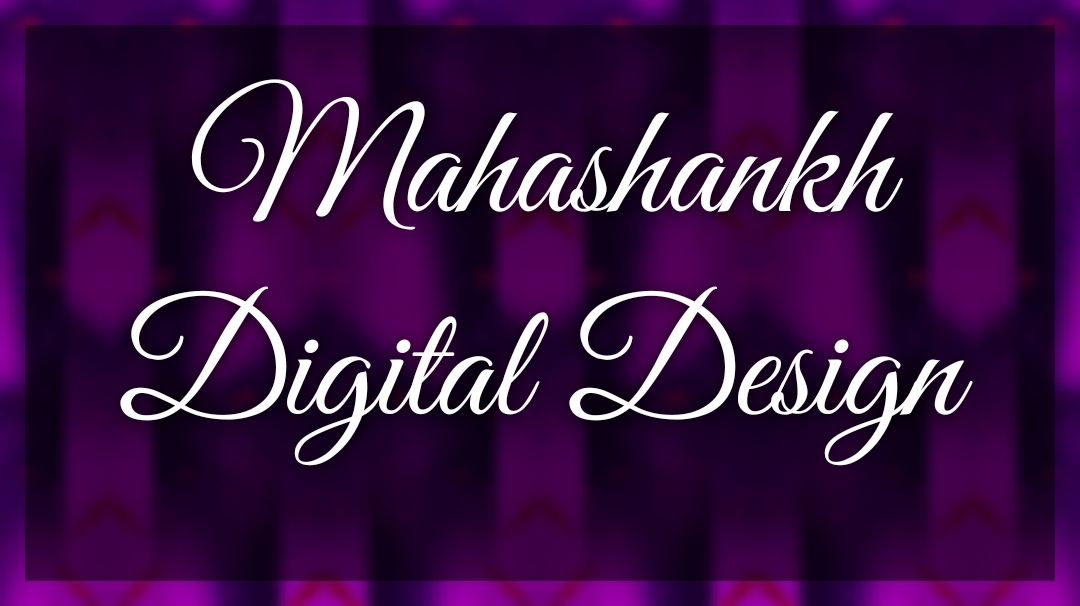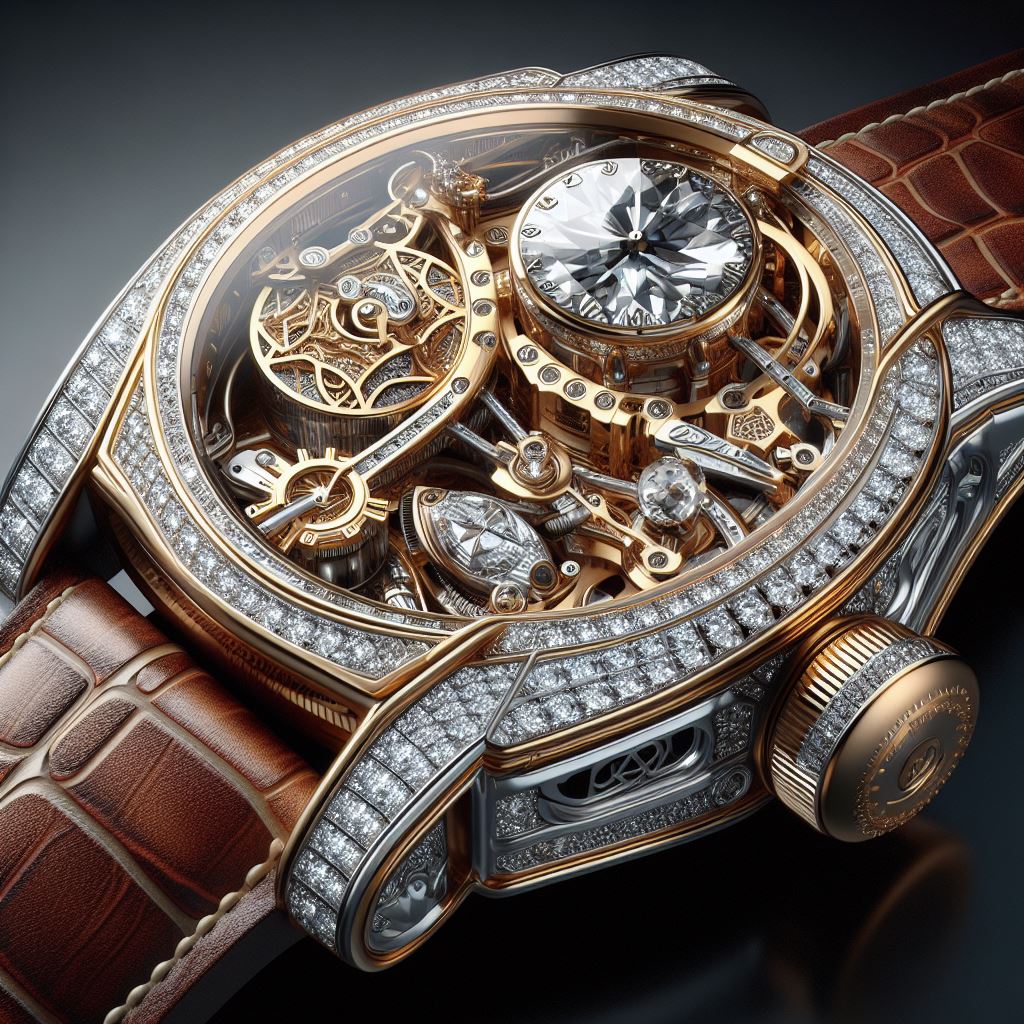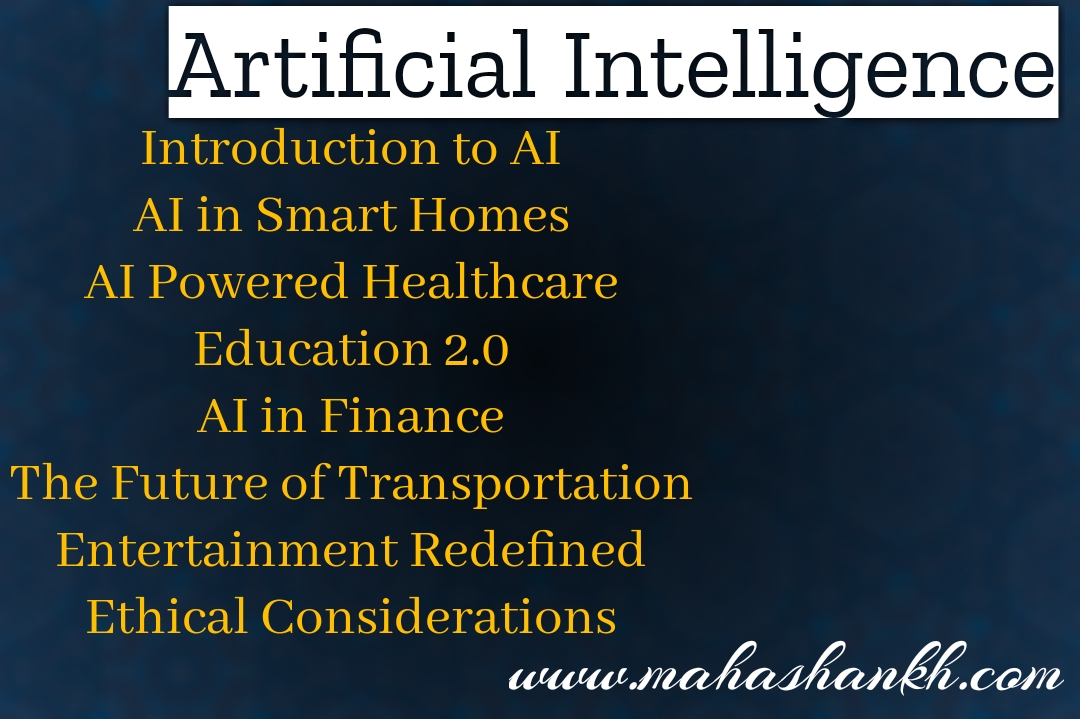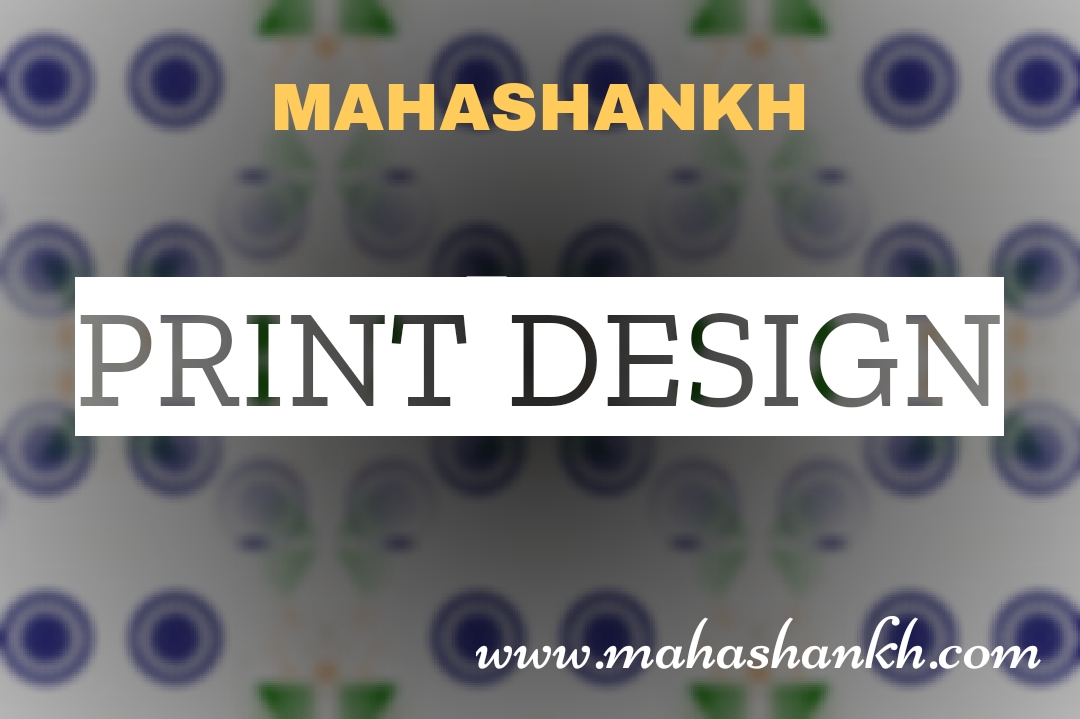100 types of design : Read below top 20 types of design
The Art and Science of Branding Design: Crafting Identities that Resonate
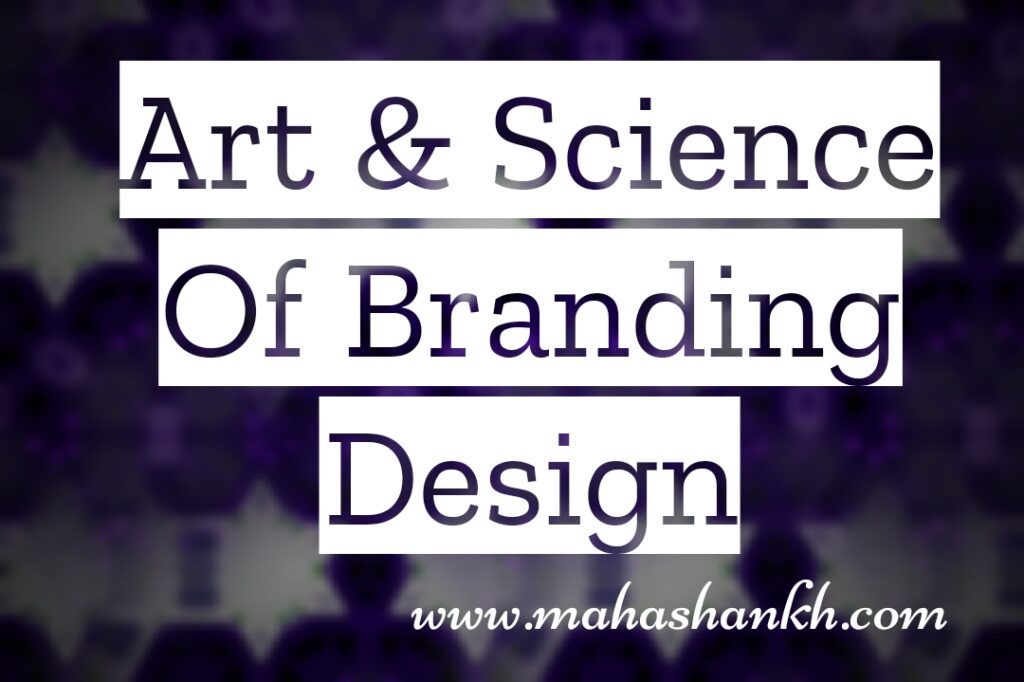
In the dynamic and competitive business landscape, where first impressions matter more than ever, the role of branding design has become paramount. Beyond just creating visually appealing logos, branding design is a strategic process that shapes and communicates the identity of a brand. This article delves into the world of branding design, exploring its significance, key elements, and the impact it can have on businesses.
Understanding Branding Design:
At its core, branding design is about creating a unique and memorable visual identity that reflects a brand’s values, personality, and promise. It goes beyond the surface aesthetics, encompassing the entire brand experience. Successful branding design establishes a strong emotional connection with the target audience, fostering loyalty and recognition.
Table of Contents
Key Elements of Branding Design:
- Logo Design:
The logo is the visual centerpiece of a brand. It should be distinctive, scalable, and easily recognizable. A well-designed logo encapsulates the essence of the brand and serves as a visual anchor for all branding efforts. - Color Palette and Typography:
Consistent use of colors and typography reinforces brand recognition. The chosen color palette conveys emotions and associations, while typography contributes to the overall brand personality. Both elements should align with the brand’s identity and messaging. - Brand Messaging:
Clear and consistent messaging is crucial for effective branding. A brand’s voice should be carefully crafted to resonate with the target audience, conveying its values, mission, and unique selling propositions. - Brand Imagery and Visual Elements:
The selection of imagery and other visual elements contributes to the overall brand story. From photography style to graphic elements, every visual component should align with the brand’s personality and narrative. - Brand Guidelines:
Establishing comprehensive brand guidelines ensures consistency across all touchpoints. These guidelines provide a roadmap for the use of logos, colors, fonts, and other design elements, ensuring a cohesive brand identity.
The Impact of Effective Branding Design:
- Recognition and Recall:
Well-executed branding design facilitates instant recognition. Consumers are more likely to remember and choose a brand they can easily identify amidst a sea of competitors. - Trust and Credibility:
A consistent and professional visual identity instills trust in consumers. A strong brand presence signals reliability and credibility, fostering long-term relationships with customers. - Competitive Advantage:
In crowded markets, a distinctive brand identity sets a company apart from its competitors. It becomes a unique selling point that can influence consumer preferences and purchasing decisions. - Emotional Connection:
Brands that evoke emotions create lasting connections with their audience. Effective branding design elicits positive emotions, making consumers more likely to form a personal attachment to the brand.
Branding design is a powerful tool for shaping perceptions, building relationships, and driving business success. It’s a multifaceted discipline that requires a deep understanding of the brand, its values, and its target audience. By investing in thoughtful and strategic branding design, businesses can establish a strong foundation for growth and create a lasting impact in the minds of consumers.
The Art of Packaging: Designing Experiences More Than Just Boxes

Packaging design is often underestimated, yet it plays a crucial role in the success of a product. It’s more than just a pretty box; it’s a silent salesperson, a brand ambassador, and an experience waiting to be unwrapped. In today’s competitive market, effective packaging design can make or break a product’s shelf life and brand perception.
The Key Functions of Packaging Design
Packaging design serves several vital functions:
- Protection: The primary function is to protect the product from physical damage during storage, transportation, and retail display.
- Information: Packaging communicates essential details about the product, such as ingredients, benefits, and usage instructions.
- Marketing: Packaging is a powerful marketing tool that grabs attention, communicates brand identity, and influences purchasing decisions.
- Convenience: Packaging should be easy to open, use, and store, enhancing the overall consumer experience.
- Sustainability: Responsible packaging design considers the environmental impact throughout the product lifecycle, minimizing waste and promoting recyclability.
Elements of Effective Packaging Design
Several key elements contribute to effective packaging design:
- Branding: The packaging should seamlessly reflect the brand’s identity, using consistent colors, logos, and typography.
- Target audience: Understanding the target audience’s preferences and demographics is crucial for creating designs that resonate with them.
- Material and shape: Choosing the right materials and shapes that are functional, sustainable, and visually appealing.
- Color and graphics: Colors and graphics can evoke emotions, tell stories, and communicate product benefits effectively.
- Information hierarchy: Important information like ingredients, instructions, and expiry dates should be clear, concise, and easy to find.
Creative Trends in Packaging Design
The world of packaging design is constantly evolving, with new trends emerging all the time. Some of the current trends include:
- Minimalism: Clean lines, simple colors, and uncluttered designs are gaining popularity, reflecting a shift towards sustainability and focus on the product itself.
- Personalization: Consumers are increasingly looking for unique and personalized experiences. Packaging that incorporates custom printing, interactive elements, or QR codes can create a sense of connection and exclusivity.
- Sustainability: Eco-friendly materials, refillable containers, and biodegradable packaging are becoming the norm as consumers become more conscious of their environmental impact.
- Experience-driven design: Packaging is going beyond just protection and information to create interactive experiences. Augmented reality features, QR codes that link to recipes or stories, and sensory elements like textures or scents are adding a new dimension to packaging.
The Future of Packaging Design
As technology advances and consumer preferences evolve, packaging design will continue to adapt and innovate. We can expect to see more integration of technology, such as smart packaging that informs consumers about product freshness or provides interactive experiences. Sustainability will remain a key focus, with the development of even more efficient and eco-friendly materials and packaging systems. Ultimately, the future of packaging design lies in creating experiences that go beyond just containing a product, but rather, connecting with consumers on an emotional level and contributing to a more sustainable future.
Packaging design is an art form that requires a blend of creativity, technical expertise, and marketing savvy. By understanding the key functions, elements, and trends in packaging design, businesses can create packaging that not only protects and informs but also stands out on the shelf, resonates with consumers, and contributes to a more sustainable future. So, the next time you pick up a product, take a moment to appreciate the design and the thought that went into creating an experience that goes beyond just a box.
Designing Experiences: The Art and Science of Exhibition Design
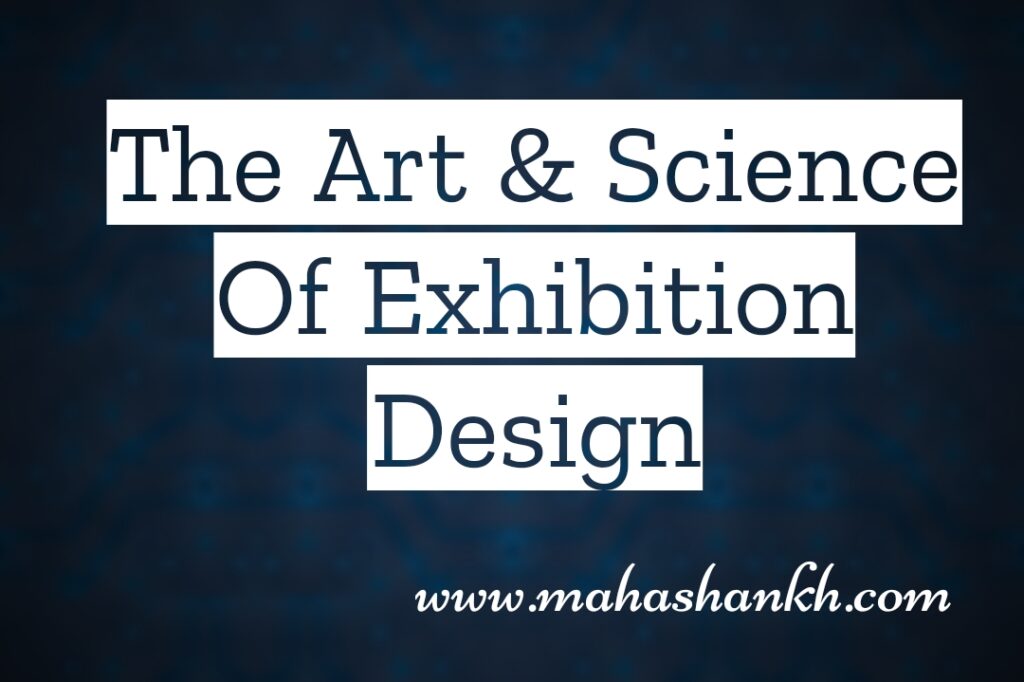
In the realm of visual communication and immersive storytelling, exhibition design stands as a testament to the fusion of art, architecture, and strategic planning. Far beyond the mere arrangement of objects in a space, exhibition design transforms environments into engaging narratives, providing visitors with an unforgettable experience. This article delves into the intricacies of exhibition design, exploring its purpose, key components, and the crucial role it plays in conveying messages and fostering connections.
The Purpose of Exhibition Design:
Exhibition design is a creative discipline that goes beyond aesthetics; its primary purpose is to communicate a story, showcase information, or convey a brand’s essence. Whether in museums, trade shows, or corporate events, the design of an exhibition space shapes the way visitors interact with and perceive the content presented. It is about creating an immersive environment that captivates, educates, and leaves a lasting impression.
Key Components of Exhibition Design:
- Spatial Planning:
Effective exhibition design begins with a thoughtful spatial layout. The arrangement of exhibits, pathways, and interactive elements should guide visitors through a cohesive narrative, ensuring a logical flow and an engaging experience. - Thematic Consistency:
Establishing a clear theme is essential for conveying a cohesive message. From color schemes to visual motifs, maintaining thematic consistency enhances the overall impact of the exhibition and reinforces the intended narrative. - Interactive Elements:
The inclusion of interactive elements elevates the visitor experience. Touchscreens, augmented reality, and hands-on activities create a dynamic engagement that not only informs but also entertains, making the content more memorable. - Lighting and Atmosphere:
Lighting plays a crucial role in setting the mood and highlighting key elements within an exhibition. Thoughtful use of lighting can create drama, draw attention to specific exhibits, and enhance the overall ambiance of the space. - Graphic Design and Signage:
Clear and effective graphic design, including signage and wayfinding elements, is essential for guiding visitors and communicating information. Consistent branding and legible design contribute to a seamless and enjoyable experience.
The Impact of Effective Exhibition Design:
- Memorability:
A well-designed exhibition leaves a lasting impression on visitors. The careful arrangement of elements and the immersive experience contribute to a memorable encounter that extends beyond the event itself. - Educational Value:
Exhibitions serve as educational platforms, and effective design can enhance the understanding and retention of information. Thoughtful curation and presentation foster a deeper connection between the audience and the content. - Brand Visibility:
For corporate events and trade shows, exhibition design is a powerful tool for enhancing brand visibility. A visually appealing and strategically designed exhibition booth can attract attention, leaving a positive impression on potential clients and partners. - Community Engagement:
In cultural institutions, exhibitions are opportunities to engage with the community. By creating spaces that resonate with diverse audiences, exhibition design becomes a catalyst for dialogue, cultural exchange, and community involvement.
Exhibition design is a harmonious blend of creativity, strategy, and sensory experience. It is a medium through which stories are told, knowledge is shared, and connections are forged. As technology continues to advance, the possibilities for immersive and interactive exhibition design are limitless, promising an exciting future for this dynamic field that continues to redefine how we experience information and ideas.
Crafting Comfort and Style: The Artistry of Furniture Design
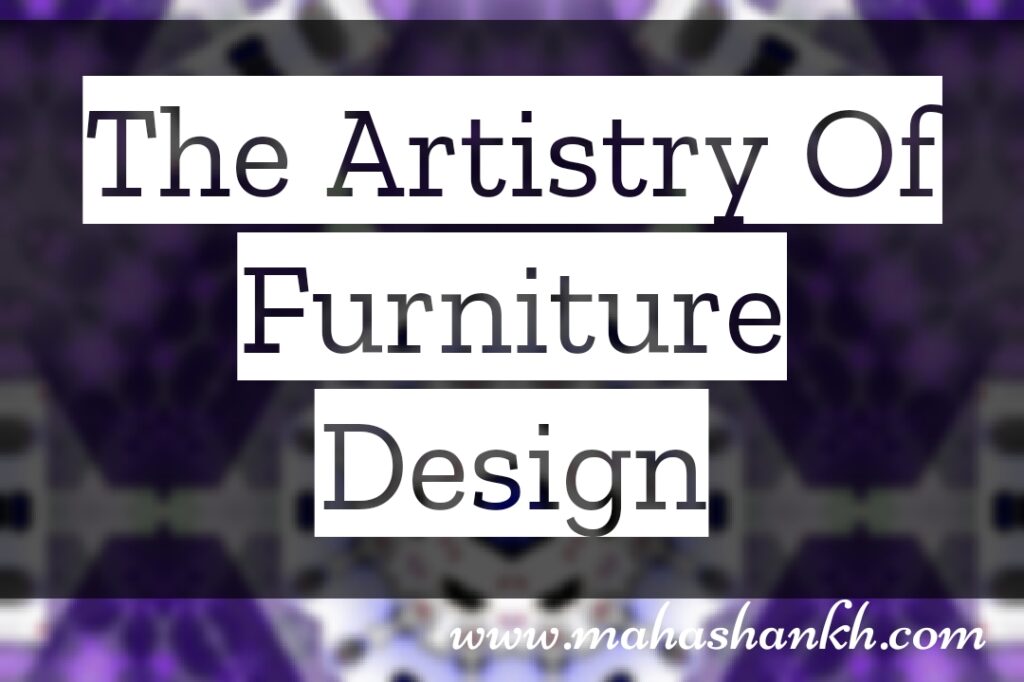
Furniture design, often overlooked as a functional necessity, is, in fact, a dynamic and evolving field that seamlessly marries aesthetics, functionality, and innovation. Beyond providing a place to sit or store items, furniture design shapes the spaces we inhabit, influencing our moods and enhancing our daily lives. This article delves into the world of furniture design, exploring its significance, design principles, and the evolving trends that contribute to the creation of timeless pieces.
The Significance of Furniture Design:
Furniture design is more than the creation of objects; it is the thoughtful consideration of how people interact with their living and working environments. Beyond aesthetics, designers must consider comfort, usability, and the overall impact on the space. A well-designed piece of furniture not only serves its intended purpose but also contributes to the atmosphere and character of the surroundings.
Key Design Principles:
- Functionality:
The primary purpose of any piece of furniture is to serve a function. Furniture designers carefully consider the intended use, ensuring that each element is crafted with practicality in mind. From chairs that provide ergonomic support to storage solutions that maximize space, functionality is at the core of every design. - Aesthetics:
Aesthetic appeal is a crucial aspect of furniture design. The visual language of a piece contributes to the overall design aesthetic of a space. Whether modern and minimalist or ornate and traditional, the design should resonate with the intended audience and complement the surrounding environment. - Materials and Sustainability:
The choice of materials not only affects the durability of a piece but also its environmental impact. Sustainable and eco-friendly materials are becoming increasingly important in furniture design, reflecting a growing awareness of environmental responsibility within the industry. - Ergonomics:
Comfort is a key consideration in furniture design. Ergonomics involves the study of how furniture interacts with the human body to ensure that designs prioritize user comfort and health. From office chairs to sofas, ergonomic principles play a crucial role in creating user-friendly and comfortable furniture. - Innovation and Technology:
Advancements in technology open new possibilities for furniture design. From smart furniture that integrates with technology to the use of innovative manufacturing techniques, designers are pushing boundaries to create pieces that align with the needs and preferences of the modern consumer.
Evolution of Trends in Furniture Design:
- Minimalism and Simplicity:
Minimalist designs, characterized by clean lines and a focus on functionality, continue to be popular. This aesthetic not only suits modern living spaces but also aligns with a desire for simplicity and decluttered environments. - Customization and Personalization:
With a growing emphasis on individuality, customizable and personalized furniture is on the rise. Designers are incorporating modular elements and customizable features, allowing consumers to tailor furniture to their specific preferences and needs. - Natural and Sustainable Materials:
The use of natural and sustainable materials, such as reclaimed wood and recycled metals, is gaining traction. Consumers are increasingly seeking environmentally conscious options, driving the industry toward more sustainable practices. - Blurring Lines Between Indoor and Outdoor Furniture:
The distinction between indoor and outdoor furniture is becoming less defined. Designs that seamlessly transition between indoor and outdoor spaces cater to the desire for flexible and multifunctional living environments.
Furniture design is a dynamic and ever-evolving field that goes beyond creating functional pieces. It is an art form that shapes the way we live, work, and interact with our surroundings. As designers continue to push boundaries and respond to changing societal needs, the world of furniture design remains a fascinating intersection of creativity, functionality, and innovation, contributing to the creation of spaces that are both aesthetically pleasing and supremely functional.
Beyond the Horizon: The Artistry and Sustainability of Landscape Design
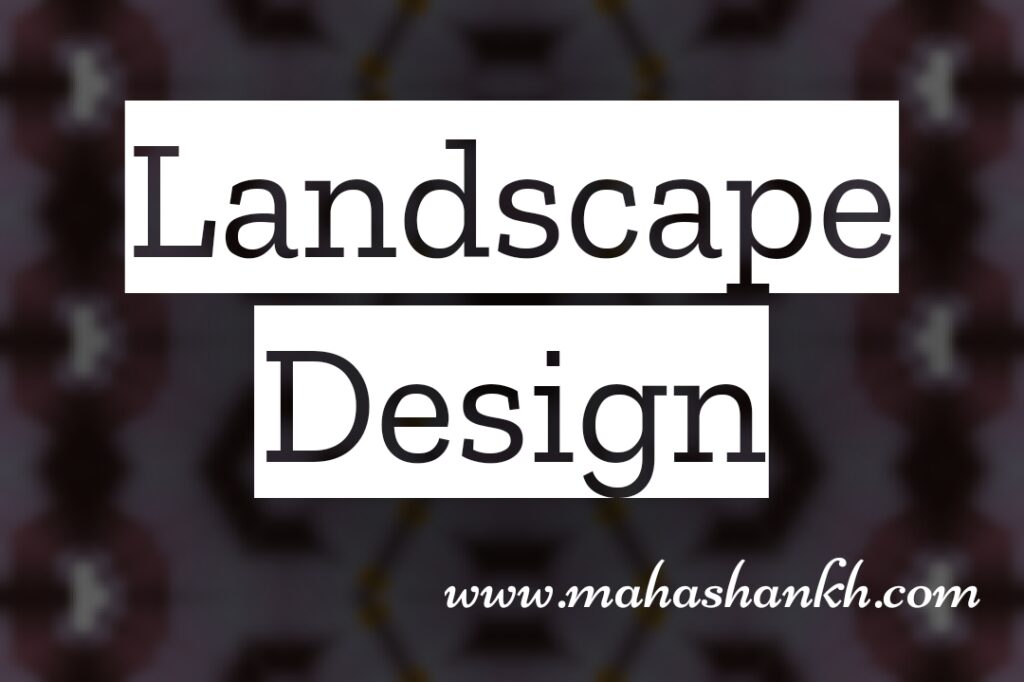
Landscape design, a discipline that combines art, science, and environmental consciousness, plays a pivotal role in shaping the outdoor spaces we inhabit. Moving beyond the conventional concept of gardens and lawns, landscape design encompasses a holistic approach to creating harmonious environments that balance aesthetics, functionality, and ecological sustainability. In this article, we explore the multifaceted world of landscape design, its key principles, and the evolving trends that contribute to the creation of captivating outdoor spaces.
The Essence of Landscape Design:
At its core, landscape design is the intentional arrangement of natural and built elements to achieve a specific purpose. It involves the strategic planning and manipulation of outdoor spaces to enhance their beauty, usability, and ecological sustainability. Landscape designers work with the natural topography, vegetation, and built structures to create environments that seamlessly integrate with their surroundings.
Key Principles of Landscape Design:
- Unity and Harmony:
Achieving a sense of unity and harmony is fundamental to successful landscape design. The various elements within a space should complement each other, creating a cohesive and visually appealing whole. Unity can be achieved through the repetition of shapes, colors, and textures. - Balance:
Balance is crucial in landscape design, both visually and functionally. A well-balanced outdoor space considers the distribution of elements, such as plantings, hardscapes, and open areas, to create a sense of equilibrium. Balance also extends to the diversity of plant species and their placement within the landscape. - Scale and Proportion:
Scale and proportion ensure that elements within the landscape relate harmoniously to each other and to the overall space. A thoughtful consideration of the size and placement of trees, shrubs, and built structures contributes to a visually pleasing and well-proportioned design. - Functionality:
Practicality and functionality are essential considerations in landscape design. Outdoor spaces should be designed with the intended use in mind, whether it be for relaxation, entertainment, or recreation. Thoughtful planning ensures that the design meets the needs of its users. - Sustainability:
With a growing emphasis on environmental responsibility, sustainability is a key consideration in modern landscape design. From water-efficient irrigation systems to the use of native plant species that require minimal maintenance, sustainable practices are integral to the longevity and health of outdoor spaces.
Emerging Trends in Landscape Design:
- Native Plant Landscaping:
Embracing native plant species not only enhances biodiversity but also contributes to a low-maintenance and water-efficient landscape. Native plants are adapted to local climates and ecosystems, promoting ecological balance. - Outdoor Living Spaces:
The extension of indoor living to outdoor spaces is a growing trend. Landscape designers are incorporating outdoor kitchens, seating areas, and fire features to create multifunctional and inviting outdoor living spaces. - Biophilic Design:
Inspired by the concept of biophilia, which emphasizes the innate human connection to nature, landscape designers are integrating natural elements into urban environments. Green roofs, living walls, and nature-inspired design elements enhance well-being and connection to the natural world. - Smart Landscapes:
Technology is making its mark on landscape design with the advent of smart irrigation systems, lighting controls, and automated features. These technologies not only enhance convenience but also contribute to resource efficiency.
Landscape design is a dynamic and evolving discipline that goes beyond creating aesthetically pleasing outdoor spaces. It is a harmonious blend of artistic expression, environmental awareness, and functionality. As society places an increasing emphasis on sustainable and purposeful design, landscape designers play a crucial role in creating outdoor environments that not only captivate the senses but also contribute to the well-being of individuals and the planet.
Illuminating Spaces: The Art and Science of Lighting Design
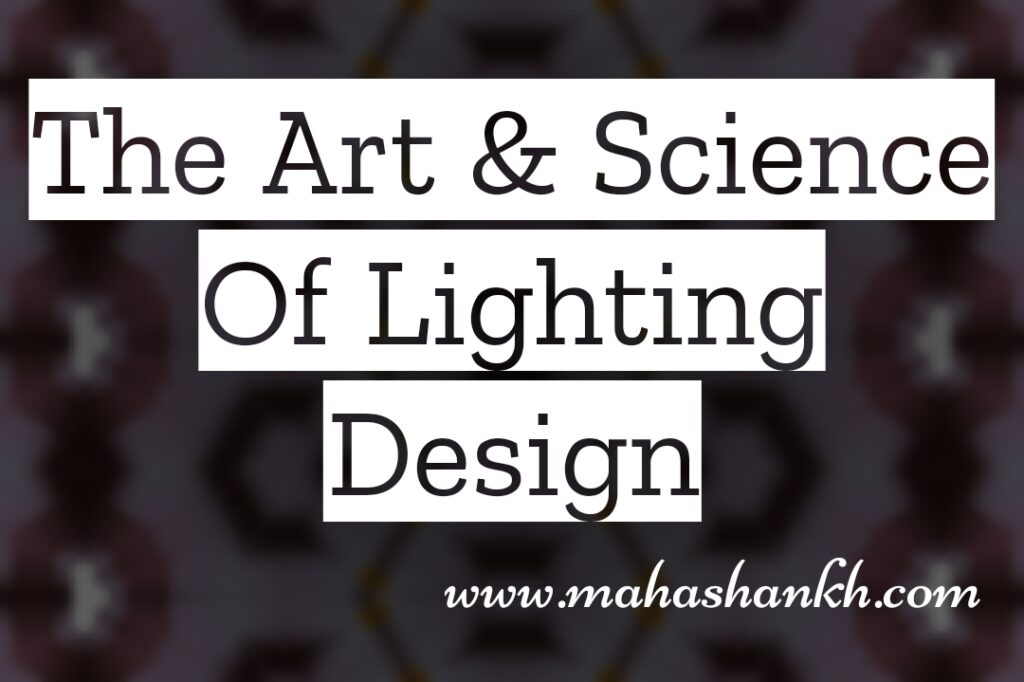
In the world of design, lighting is a powerful and often underestimated element that can transform spaces, evoke emotions, and enhance experiences. Lighting design is a dynamic discipline that marries artistry with technical expertise, contributing to the visual and functional aspects of interiors and exteriors. This article explores the intricate world of lighting design, examining its significance, key principles, and the evolving trends that shape the way we perceive and interact with our environments.
The Significance of Lighting Design:
Lighting design is not merely about illuminating a space; it is about orchestrating a symphony of light and shadow to create ambiance, highlight focal points, and influence the mood. Whether in residential, commercial, or public spaces, thoughtful lighting design can elevate the aesthetic appeal, improve functionality, and enhance the overall user experience. It encompasses a spectrum of considerations, from the choice of fixtures to the manipulation of light intensity, color, and direction.
Key Principles of Lighting Design:
- Functionality:
Lighting should serve a functional purpose, meeting the specific needs of the space. Different areas within a room or environment may require varying levels of illumination. Task lighting, ambient lighting, and accent lighting are strategically combined to achieve a balance that fulfills both practical and aesthetic requirements. - Balance and Contrast:
Achieving a harmonious balance of light and shadow is crucial in lighting design. Contrasting areas of light and darkness create visual interest and depth, guiding the viewer’s focus and emphasizing architectural or design elements. - Color Temperature:
The color temperature of light influences the atmosphere of a space. Warm tones (lower kelvin temperatures) create a cozy and intimate ambiance, while cool tones (higher kelvin temperatures) contribute to a more vibrant and energetic environment. Lighting designers carefully consider color temperature to align with the desired mood. - Layered Lighting:
Effective lighting design involves layering different types of lighting to create a versatile and adaptable environment. Combining ambient, task, and accent lighting allows for flexibility in meeting the diverse needs of a space. - Energy Efficiency:
With a growing emphasis on sustainability, energy-efficient lighting solutions are a key consideration in modern lighting design. LED technology, sensor-controlled systems, and other innovations contribute to reducing energy consumption while maintaining optimal lighting conditions.
Emerging Trends in Lighting Design:
- Smart Lighting:
The integration of smart technology allows for dynamic control of lighting systems. Smart bulbs, automated dimming, and programmable lighting scenes enable users to customize their environments for different activities and moods. - Biophilic Lighting:
Inspired by biophilic design principles, which aim to incorporate elements of nature into the built environment, biophilic lighting mimics natural light patterns. Dynamic lighting that simulates daylight cycles can enhance well-being and promote a connection to the outdoors. - Sculptural Lighting Fixtures:
Lighting fixtures are increasingly becoming works of art in themselves. Unique and sculptural designs not only provide illumination but also serve as statement pieces, contributing to the overall aesthetic of a space. - Human-Centric Lighting:
Human-centric lighting focuses on the impact of light on human well-being and circadian rhythms. Adjustable lighting that mimics natural sunlight throughout the day can positively influence mood, productivity, and overall health.
Lighting design is a dynamic and evolving field that plays a pivotal role in shaping our perceptions of the spaces we inhabit. Beyond functionality, lighting serves as a design element that can enhance aesthetics, improve well-being, and contribute to the overall atmosphere of a space. As technology advances and sustainability becomes a central focus, the world of lighting design continues to evolve, promising a future where illumination is not just a necessity but a carefully curated and customizable experience.
The Art of Identity: Unraveling the Essence of Logo Design
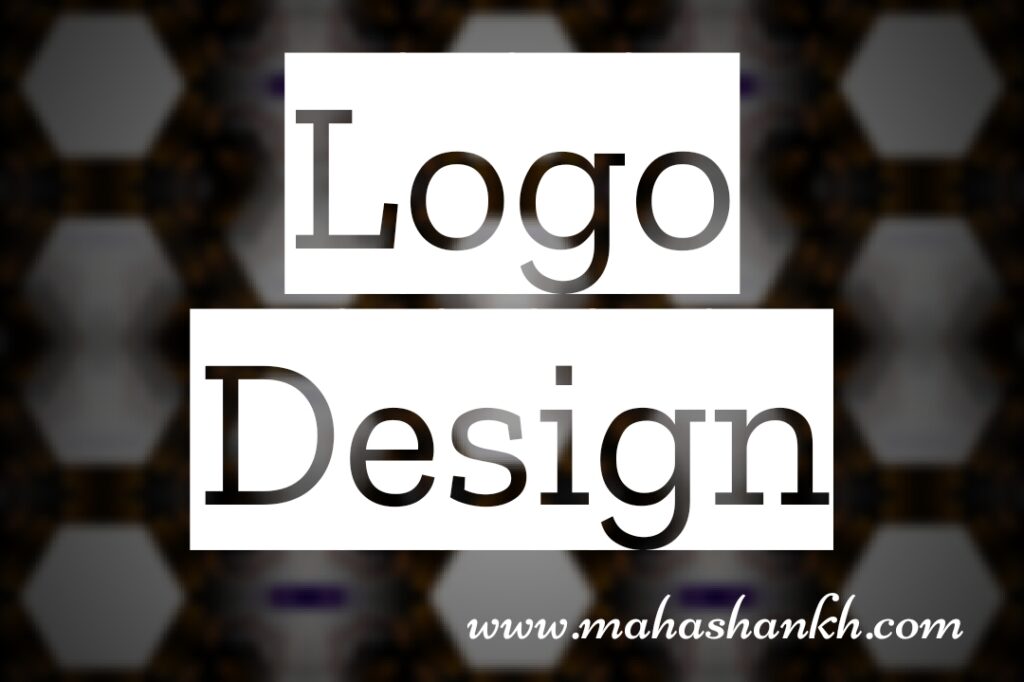
In the visual realm of branding, a logo stands as the cornerstone of identity, encapsulating the essence of a business or organization in a single, memorable mark. Beyond a mere visual symbol, logo design is a delicate art that intertwines creativity, strategy, and symbolism to leave a lasting imprint on the minds of consumers. This article delves into the intricate world of logo design, exploring its significance, key principles, and the evolving trends that shape the visual landscapes of businesses worldwide.
The Significance of Logo Design:
A logo is more than a graphical representation; it is the visual ambassador of a brand, embodying its values, personality, and mission. In a crowded and competitive marketplace, a well-crafted logo serves as an instant identifier, fostering recognition, trust, and connection with the target audience. Whether gracing a product, website, or storefront, a logo is a powerful tool that communicates a brand’s identity in a succinct and impactful manner.
Key Principles of Logo Design:
- Simplicity:
Simplicity is a fundamental principle in logo design. A simple and uncluttered design ensures that the logo is easily recognizable and memorable. Icons or symbols with clear shapes and minimal details often stand the test of time and remain timeless. - Versatility:
A well-designed logo should be versatile and effective across various mediums and scales. It should maintain its clarity and impact whether displayed on a business card, a billboard, or a digital screen. Versatility allows for consistent and coherent branding across diverse applications. - Relevance:
The design of a logo should be relevant to the nature of the business or organization it represents. It should convey the company’s core values and resonate with its target audience. Symbolism and imagery should align with the industry and the brand’s narrative. - Memorability:
A successful logo is one that leaves a lasting impression. A memorable design ensures that consumers can recall and recognize the brand at a glance. Elements such as distinctive shapes, colors, or typography contribute to the memorability of a logo. - Timelessness:
While trends come and go, a timeless logo design transcends the ephemeral. Elements that withstand the test of time contribute to the longevity and relevance of a logo, ensuring it remains effective and meaningful over the years.
Emerging Trends in Logo Design:
- Minimalism:
The trend towards minimalism continues to dominate logo design. Clean lines, simple shapes, and a focus on essential elements create visually appealing and modern logos. - Geometric Shapes:
Logos featuring geometric shapes convey a sense of balance, order, and precision. Circles, triangles, and squares are often used to create visually striking and symmetrical designs. - Gradient and Color Transitions:
The use of gradients and color transitions adds depth and dimension to logos. This trend allows for a more vibrant and dynamic visual impact, especially in digital applications. - Responsive and Adaptive Logos:
With the increasing prevalence of digital platforms, responsive logos that adapt to different screen sizes and resolutions are gaining popularity. These designs ensure consistency and legibility across various devices.
Logo design is an art form that navigates the delicate balance between aesthetics and functionality. A well-crafted logo serves as a visual anchor for a brand, communicating its identity in a concise and memorable manner. As design trends evolve and technology advances, the world of logo design continues to shape the visual landscapes of businesses, leaving an indelible mark on the ever-evolving tapestry of branding and identity.
Crafting Clarity: The Power and Purpose of Information Design
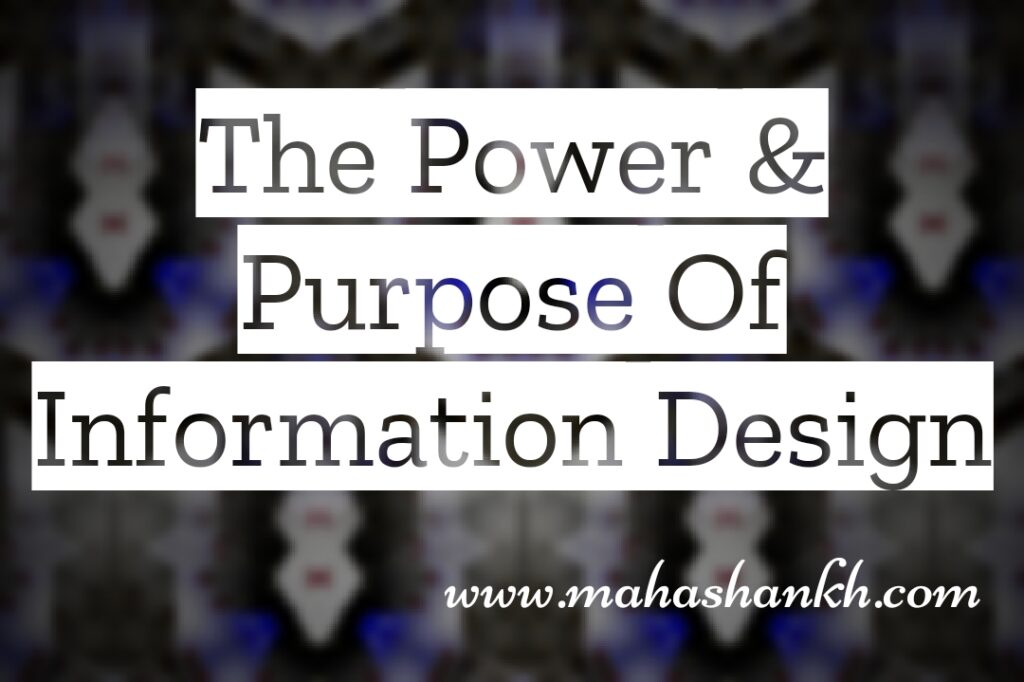
In the age of information overload, where data is abundant and attention spans are limited, the art of information design emerges as a crucial tool for transforming complexity into clarity. Information design is the strategic process of visualizing data and information, making it accessible, understandable, and engaging for a diverse audience. This article explores the significance of information design, its key principles, and the evolving role it plays in facilitating effective communication in various fields.
The Significance of Information Design:
Information design is more than just creating visually appealing graphics; it is about distilling complex information into comprehensible and actionable insights. In a world inundated with data, effective information design ensures that messages are not only seen but also understood. Whether in infographics, data visualizations, or user interfaces, the goal is to present information in a way that is accessible, meaningful, and resonant with the intended audience.
Key Principles of Information Design:
- Clarity and Simplicity:
At the heart of information design is the principle of clarity. Designs should be simple and concise, removing unnecessary complexity to facilitate understanding. Clear hierarchy, minimalistic visuals, and straightforward language contribute to the overall simplicity of information design. - Hierarchy and Organization:
Establishing a clear hierarchy helps guide the viewer’s attention to the most important information. Organizing content in a logical and sequential manner aids comprehension, ensuring that the audience can follow the narrative without confusion. - Consistency:
Consistency in visual elements, such as colors, fonts, and icons, fosters a cohesive and harmonious design. A consistent visual language enhances brand identity and aids in establishing familiarity with the audience. - Engagement and Interactivity:
Information design is not just about static visuals; interactive elements can enhance engagement. Whether through clickable infographics or dynamic charts, interactivity allows users to explore information at their own pace, promoting a more immersive experience. - User-Centric Approach:
Designing with the end-user in mind is paramount. Information should be tailored to the needs, preferences, and understanding of the target audience. A user-centric approach ensures that the design effectively communicates with its intended viewers.
Applications of Information Design:
- Infographics:
Infographics combine visual elements, data, and text to convey information in a concise and engaging manner. They are widely used across various industries to present complex data, statistics, or processes. - Data Visualizations:
Transforming raw data into visual representations, such as charts, graphs, and maps, allows for quick comprehension of trends, patterns, and relationships. Data visualizations are instrumental in fields ranging from business analytics to scientific research. - User Interfaces (UI):
In digital platforms, effective UI design relies heavily on information design principles. Well-organized layouts, intuitive navigation, and clear visual cues enhance the user experience and facilitate interaction. - Wayfinding Systems:
In physical spaces, information design is applied to wayfinding systems. Clear signage, maps, and visual cues help individuals navigate complex environments, such as airports, museums, or campuses.
Emerging Trends in Information Design:
- Storytelling with Data:
Information design is increasingly embracing a narrative approach. By weaving data into compelling stories, designers can create more memorable and impactful visualizations that resonate with audiences. - Accessibility and Inclusivity:
Designing with accessibility in mind ensures that information is available to a diverse audience, including those with disabilities. Inclusive design practices, such as using alternative text and color contrasts, are becoming more prevalent. - Augmented Reality (AR) and Virtual Reality (VR):
The immersive capabilities of AR and VR open new possibilities for information design. These technologies allow users to interact with data in three-dimensional spaces, providing a more immersive and engaging experience.
Information design is a dynamic and evolving discipline that bridges the gap between data and comprehension. As technology advances and the need for effective communication intensifies, the role of information design becomes increasingly pivotal. By translating complexity into clarity, information designers contribute to a world where data is not just abundant but also intelligible, empowering individuals and organizations to make informed decisions and navigate the complexities of our information-rich age.
Crafting Experiences: The Art and Science of Experience Design
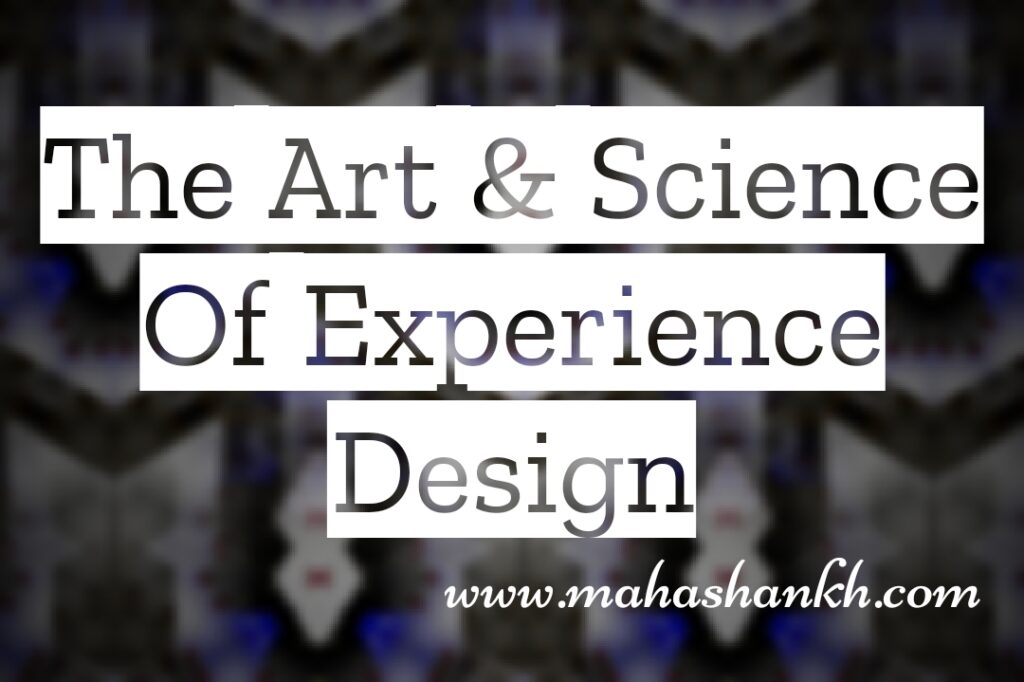
Experience design, often referred to as XD or UX (User Experience) design, stands at the intersection of creativity and functionality, shaping the way users interact with products, services, and environments. It goes beyond aesthetics, encompassing the holistic journey of users and customers, with the aim of creating memorable, meaningful, and delightful experiences. This article explores the significance of experience design, its key principles, and the evolving trends that contribute to the seamless fusion of form and function in today’s design landscape.
The Significance of Experience Design:
In a world where digital interfaces, physical spaces, and services abound, the quality of user experience plays a pivotal role in the success of products and brands. Experience design recognizes that user interactions are not isolated moments but rather a continuous journey that spans multiple touchpoints. From websites and mobile apps to retail spaces and customer service, the goal of experience design is to optimize every facet of the user’s encounter with a product or service, fostering satisfaction, loyalty, and engagement.
Key Principles of Experience Design:
- User-Centric Focus:
At the core of experience design is a deep understanding of users’ needs, preferences, and behaviors. By empathizing with users, designers can tailor experiences that resonate with their expectations, making interactions intuitive and enjoyable. - Seamless Interaction:
Experience design strives to create a seamless and intuitive flow throughout the user journey. Whether navigating a website, using a mobile app, or engaging with a physical space, the transition between different touchpoints should be smooth and coherent. - Consistency Across Touchpoints:
Maintaining consistency in design elements, branding, and messaging across various touchpoints fosters a sense of coherence. A unified and recognizable brand identity enhances user trust and familiarity. - Emotional Connection:
Great experience design goes beyond functionality; it aims to evoke positive emotions. By creating delightful and emotionally resonant interactions, designers can forge a deeper connection between users and the product or brand. - Usability and Accessibility:
Ensuring that products and services are usable by a wide range of users, including those with disabilities, is a fundamental principle. Accessibility features, intuitive navigation, and clear information hierarchy contribute to an inclusive user experience.
Applications of Experience Design:
- Digital Interfaces:
In the realm of digital products, experience design is prevalent in the creation of user interfaces for websites, mobile apps, and software applications. It encompasses everything from navigation and layout to visual design and interactive elements. - Service Design:
Service design focuses on optimizing the entire service journey, from customer interactions to behind-the-scenes processes. It considers both physical and digital touchpoints to enhance the overall service experience. - Retail Environments:
Experience design is crucial in retail, where the layout, ambiance, and customer interactions contribute to the overall shopping experience. From store layout to packaging design, every element is carefully crafted to engage customers. - Physical Products:
Even tangible products benefit from experience design. The user’s interaction with the product, from unboxing to everyday use, is considered in the design process to ensure a positive and memorable experience.
Emerging Trends in Experience Design:
- Voice and Conversational Interfaces:
With the rise of voice-activated devices and virtual assistants, experience designers are focusing on creating intuitive and conversational interfaces. Natural language processing and voice recognition technologies play a key role in shaping these interactions. - Augmented Reality (AR) and Virtual Reality (VR):
Immersive technologies such as AR and VR open new avenues for experience design. From virtual product trials to augmented reality in retail spaces, these technologies enhance user engagement and interaction. - Personalization and AI:
Experience design is increasingly leveraging artificial intelligence to deliver personalized and adaptive user experiences. Machine learning algorithms analyze user behavior to tailor content, recommendations, and interactions based on individual preferences. - Sustainability in Design:
With a growing focus on environmental consciousness, experience designers are incorporating sustainable practices into their designs. From eco-friendly packaging to digital experiences that promote sustainable behaviors, designers are aligning with the values of socially conscious consumers.
Experience design is a dynamic and evolving discipline that puts the user at the center of the design process. By combining creativity, empathy, and functionality, experience designers shape the interactions that define our digital and physical landscapes. As technology continues to advance and user expectations evolve, the field of experience design remains at the forefront, constantly pushing the boundaries of what is possible in creating seamless, engaging, and meaningful experiences for users around the globe.
Seamless Experiences: Navigating the Landscape of Service Design
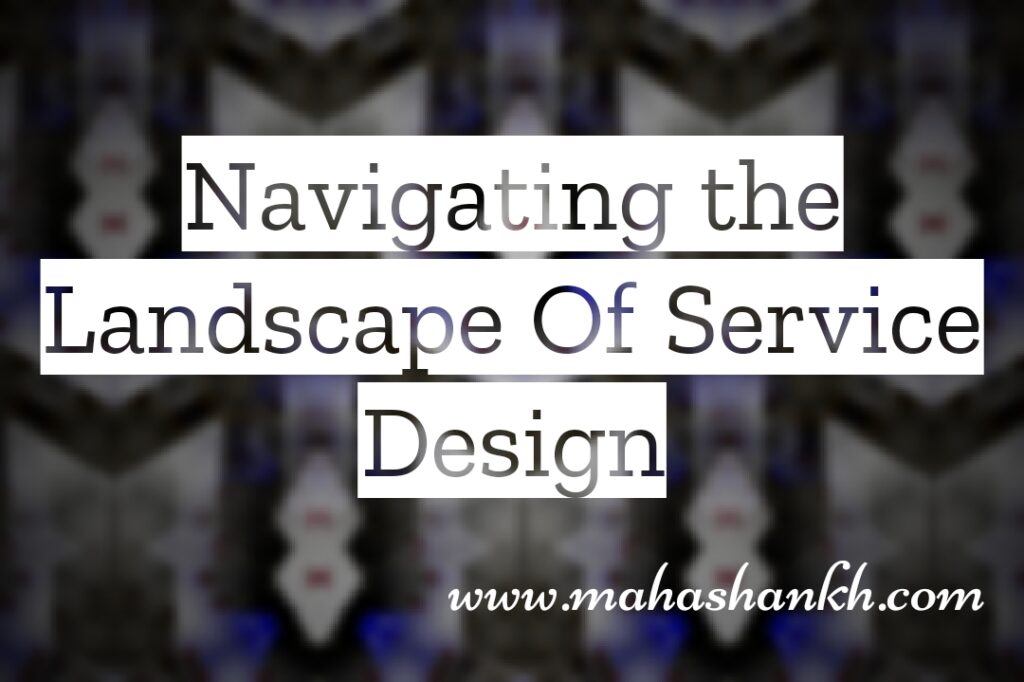
In a world characterized by interconnected systems and diverse touchpoints, service design emerges as a holistic approach to crafting experiences that transcend individual interactions. Service design encompasses the strategic orchestration of people, processes, and technology to create seamless and delightful journeys for users and customers. This article explores the significance of service design, its foundational principles, and the evolving trends that drive the continual evolution of service-oriented experiences.
The Significance of Service Design:
Service design recognizes that delivering value extends beyond individual products or touchpoints. It centers on understanding the entirety of a user’s journey, from initial awareness to post-purchase engagement. By focusing on the end-to-end experience, service design ensures that every interaction contributes to a cohesive and meaningful relationship between the user and the service provider. It is an interdisciplinary field that combines elements of design thinking, business strategy, and customer experience to create integrated and user-centric solutions.
Key Principles of Service Design:
- User-Centricity:
At the core of service design is a deep understanding of user needs, behaviors, and expectations. Designers employ methods such as user research, personas, and journey mapping to empathize with users and align service offerings with their preferences. - Holistic Perspective:
Service design takes a holistic view of the entire service ecosystem, considering touchpoints, processes, and stakeholders. This comprehensive approach ensures that each element works seamlessly together to deliver a cohesive and satisfying experience. - Co-Creation:
Service design often involves collaboration with various stakeholders, including customers, employees, and partners. Co-creation fosters a sense of ownership among participants, leading to more relevant and effective service solutions. - Iteration and Flexibility:
Given the dynamic nature of services, service design embraces an iterative and adaptable mindset. Continuous feedback loops and an openness to change allow for the refinement of services in response to evolving user needs and market conditions. - Prototyping and Testing:
Prototyping is a fundamental tool in service design, enabling the visualization and testing of service concepts before full-scale implementation. Testing helps identify potential challenges, refine processes, and ensure a smoother rollout of services.
Applications of Service Design:
- Customer Experience Design:
Service design significantly influences the customer experience, from the initial point of contact to ongoing interactions. It involves optimizing customer journeys, ensuring consistency across touchpoints, and delivering personalized and memorable experiences. - Digital Services:
In the realm of digital services, such as online platforms, apps, and e-commerce, service design focuses on creating intuitive and user-friendly interfaces. It considers the end-to-end digital journey, including user onboarding, navigation, and post-interaction support. - Healthcare Services:
Service design has found application in healthcare, where it aids in optimizing patient experiences, streamlining processes, and improving the overall quality of care. From appointment scheduling to follow-up communications, service design enhances the healthcare journey. - Public Services:
Government agencies utilize service design to enhance the delivery of public services. By streamlining bureaucratic processes, improving accessibility, and incorporating user feedback, service design contributes to more citizen-centric and efficient public services.
Emerging Trends in Service Design:
- Data-Driven Insights:
With advancements in data analytics, service designers are increasingly leveraging data to gain insights into user behavior and preferences. Data-driven decision-making enhances the personalization and effectiveness of service offerings. - Automation and AI Integration:
The integration of automation and artificial intelligence (AI) technologies is reshaping service design. Chatbots, virtual assistants, and predictive analytics contribute to more responsive, efficient, and personalized service interactions. - Ecosystem Thinking:
Service design is evolving to consider broader ecosystems, acknowledging that services often exist within interconnected networks. This approach involves collaborating with external partners, embracing open platforms, and designing for ecosystem sustainability. - Sustainable Services:
As sustainability becomes a focal point in design, service designers are exploring ways to integrate environmental and social considerations into service offerings. Sustainable practices in service design contribute to the well-being of both users and the planet.
Service design represents a paradigm shift in the way we approach the creation and delivery of services. By embracing a user-centric, holistic, and collaborative mindset, service designers navigate the complexities of modern interactions, ensuring that services are not just functional but also emotionally resonant and seamlessly integrated into the fabric of users’ lives. As the landscape of services continues to evolve, the principles and practices of service design will remain integral in shaping experiences that leave a lasting and positive impact.
FAQs Based On Types of Design
1. What is Graphic Design?
Graphic design is the art and practice of planning and projecting ideas and experiences with visual and textual content. It involves creating visuals for communication and problem-solving.
2. How is Web Design different from Graphic Design?
Web design specifically focuses on the visual aesthetics and usability of websites, while graphic design encompasses a broader range of visual communication, including print materials and digital assets.
3. What does UI/UX Design involve?
UI/UX design, or User Interface/User Experience design, focuses on enhancing user satisfaction by improving the usability, accessibility, and overall interaction between users and a product.
4. Can you explain the role of Branding in design?
Branding in design involves creating a unique and consistent visual identity for a product, service, or company. It includes elements like logos, color schemes, and typography to establish a brand’s personality.
5. How does Environmental Design impact spaces?
Environmental design considers the surroundings and aims to enhance the user experience in physical spaces. It includes elements like architecture, signage, and landscaping to create harmonious and functional environments.
6. What is Motion Design, and where is it applied?
Motion design involves creating visuals that incorporate motion or animation. It is widely used in areas such as video production, website animations, and interactive multimedia.
7. How does Sustainable Design contribute to the field of design?
Sustainable design focuses on creating products and spaces that have minimal negative impact on the environment. It considers eco-friendly materials, energy efficiency, and long-term sustainability.
8. What is the significance of Typography in design?
Typography involves the art and technique of arranging type to make written language legible, readable, and visually appealing. It plays a crucial role in conveying the message and aesthetics in design.
9. How does Game Design differ from other design disciplines?
Game design involves creating the overall experience and structure of a video game. It includes elements like storytelling, user interaction, and visual aesthetics unique to the gaming industry.
10. Explain the role of Architectural Rendering in design.
– Architectural rendering involves creating realistic visual representations of architectural designs before they are built. It helps architects and designers visualize and communicate their ideas effectively.
11. What does Visual Communication encompass in design?
– Visual communication in design involves using visual elements to convey information and ideas. It includes a wide range of disciplines like graphic design, illustration, and multimedia to communicate effectively with the audience.


